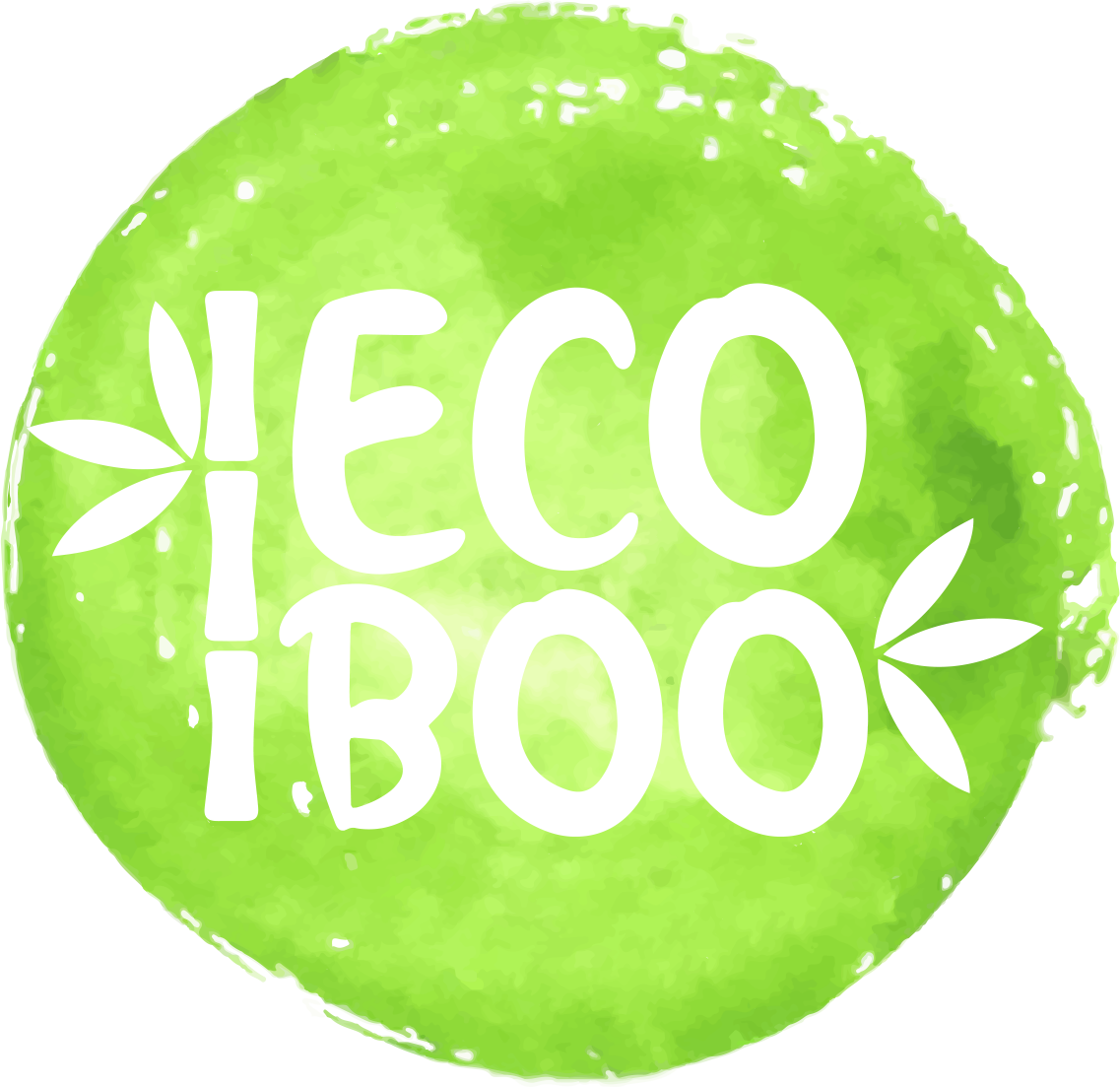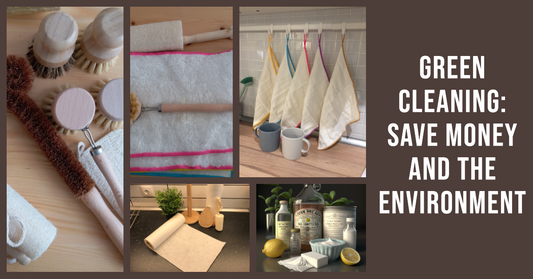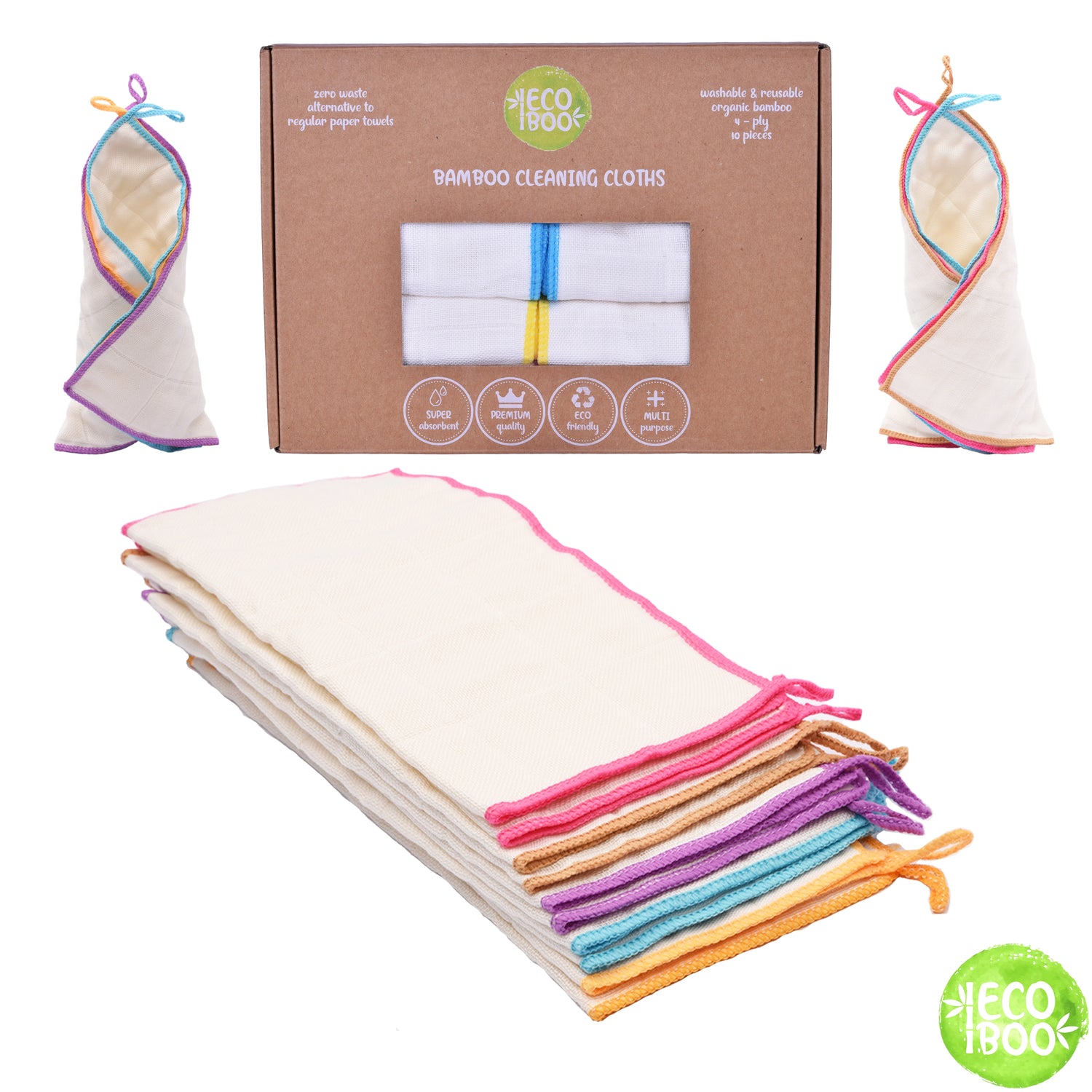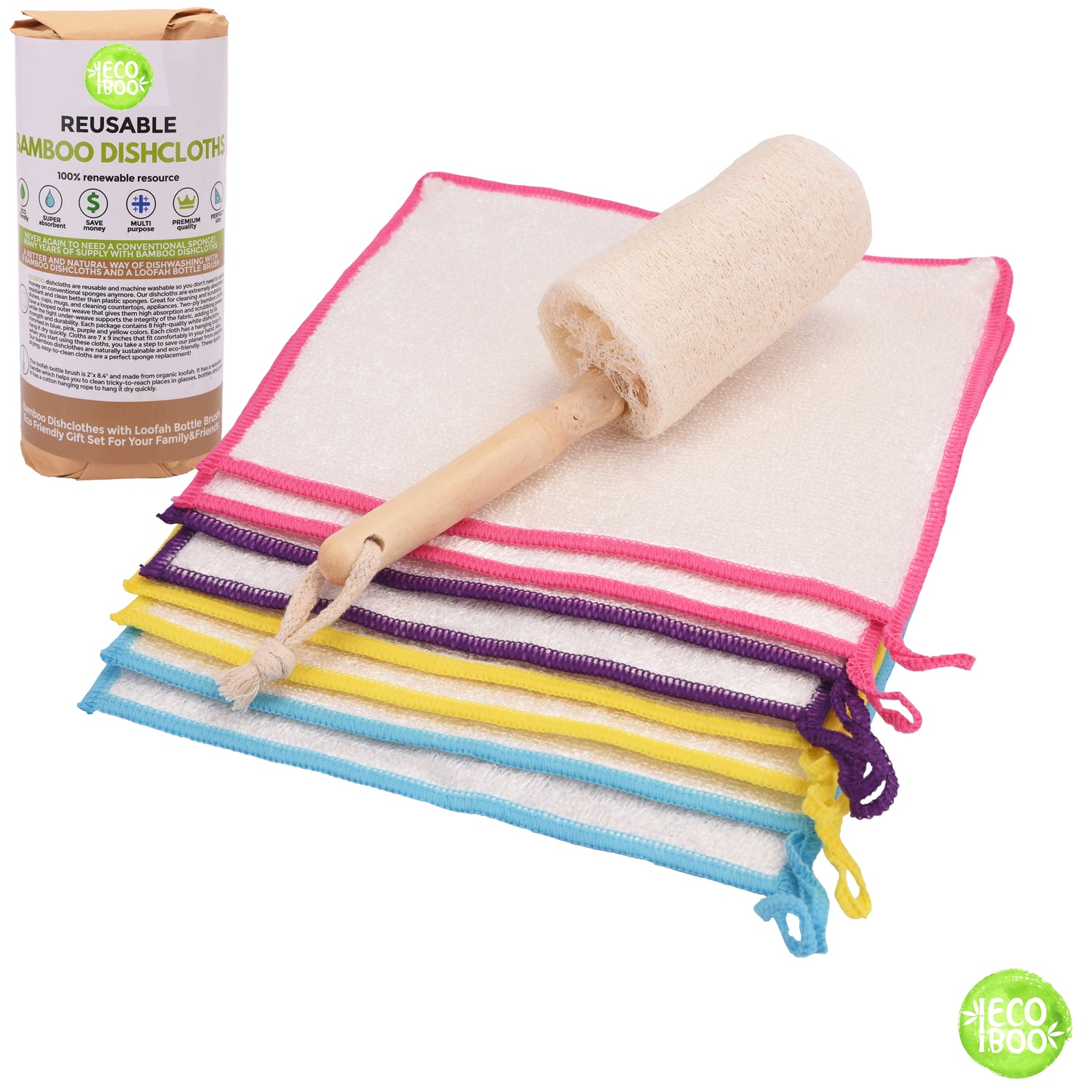I. Introduction
In the age of convenience, households across the globe are producing more waste than ever before.
From disposable wrappers to once-used gadgets, our consumption patterns have led to bins brimming with discarded items.
Amidst this backdrop, a rising wave of environmental consciousness is prompting individuals to re-evaluate their waste habits.
Enter upcycling and repurposing – transformative approaches that breathe new life into old items, particularly with an aim toward sustainability.
II. The Environmental Impact of Disposable Cleaning Tools
Every year, countless cleaning tools – from sponges to mop heads – find their way to landfills after a brief stint in our homes.
This quick turnover rate not only represents a waste of resources but also underscores a larger environmental issue.
The production of these cleaning tools requires raw materials, energy, and transportation, each step adding to the item's carbon footprint.
Furthermore, once discarded, these items can take years, if not centuries, to decompose, especially if made from non-biodegradable materials.
Over time, these discarded tools not only occupy valuable landfill space but also contribute to greenhouse gas emissions and potential water contamination.
III. Benefits of Repurposing Household Items
- Environmental Conservation: By giving a second life to household items, we drastically reduce the need to extract more raw materials from the Earth. This not only conserves natural resources but also lessens the energy-intensive processes associated with producing new items.
- Economic Advantages: Repurposing can lead to substantial cost savings. Instead of spending money on new cleaning tools, households can utilize what they already have, making the most of their prior purchases.
- Boosting Creativity: Repurposing isn't just about sustainability; it's an exercise in creativity. Finding new purposes for old items challenges us to think outside the box, leading to innovative solutions for everyday tasks. It becomes not just a chore, but a rewarding project, turning something old into something functionally new.
IV. T-shirts to Rags

Every household has its share of worn-out T-shirts, often relegated to the back of a drawer or destined for the donation bin.
But before discarding them, consider this eco-friendly alternative: transforming them into reusable cleaning rags.
-
How to Convert Old T-shirts into Cleaning Rags:
- Start by washing the T-shirt one last time to ensure it's clean.
- Lay the T-shirt flat on a surface and remove any designs or prints if necessary.
- Cut off the sleeves and neckline.
- Depending on the desired size of your rag, cut the remaining torso portion into squares or rectangles. For larger cleaning tasks, you might want a bigger piece, while smaller tasks might require tinier cuts.
-
Benefits of Fabric Rags over Paper Towels:
- Sustainability: Fabric rags can be washed and reused multiple times, reducing waste.
- Durability: Unlike paper towels, fabric rags won't easily tear or disintegrate when wet.
- Cost-Efficiency: Reusing old T-shirts saves money on buying disposable cleaning products.
- Versatility: They're perfect for a variety of tasks, from wiping counters to cleaning windows or dusting.
V. Old Toothbrushes: Small Cleaning Companions

An old toothbrush might seem like a mere waste, but with a little creativity, it can become a formidable cleaning ally.
-
Repurposing Toothbrushes for Detailed Cleaning Tasks:
- With its small head and sturdy bristles, a toothbrush is perfect for scrubbing tiny nooks and corners.
- Before repurposing, ensure the toothbrush is cleaned thoroughly. Soak it in a mixture of vinegar and water for an hour, then rinse it off.
-
Where an Old Toothbrush Shines:
- Kitchen: Cleaning the grooves of utensils, around the sink, or the burner grates.
- Bathroom: Scrubbing grout, faucet bases, and other tight spots.
- Living spaces: Detailing decor items, cleaning keyboard keys, or maintaining jewelry.
VI. Cardboard Tubes as Vacuum Attachments

Those cardboard tubes from used-up paper towels or toilet paper rolls? They're not just recyclable—they're reusable.
-
Crafting Crevice Tools from Cardboard Tubes:
- Take a cardboard tube and fit one end over your vacuum cleaner's hose. If it's too big, you can make a slit and fold it until it fits snugly.
- Flatten the other end and fold it into a tapered shape. This will allow you to reach tighter spots.
-
Advantages of DIY Vacuum Attachments:
- Precision Cleaning: The tapered end can access tight spots like window tracks, corners, or between cushions.
- Economical: No need to buy specialized vacuum attachments when a cardboard tube does the trick!
- Eco-Friendly: Instead of discarding the tubes, you're giving them a second life, reducing waste.
-
VII. Socks: Multipurpose Cleaning Cloths

Socks that have lost their pair or have worn thin can find new life as cleaning tools.
Far from their original purpose, these textile wonders can become your next favorite cleaning accessory.
-
Old Socks as Dusting Gloves:
- Slip the sock over your hand, making an instant glove that's perfect for dusting. This is especially effective for irregularly shaped items where a sock can conform to the shape, ensuring thorough cleaning.
- For wet cleaning tasks, dampen the sock slightly. It can be especially effective in cleaning window blinds or other slatted surfaces.
-
Maximizing Socks in Cleaning:
- Color Coding: Differentiate socks based on tasks – one color for dusting, another for wet tasks, and so on.
- Material Matters: Thicker socks can be great for heavy-duty scrubbing, while thinner ones are perfect for polishing or light dusting.
- Aftercare: Once used, turn them inside out, wash them, and they're ready for another round.
VIII. Broken Baskets into Wall Organizers

A basket that's come apart isn't destined for the trash.
With a touch of creativity, they can find a second life as wall-mounted storage solutions.
-
Repurposing Basket Parts:
- The sturdy base of the basket can be attached to a wall, creating a pocket-style organizer.
- Sidewalls, if intact, can be strung together in a vertical series, creating a hanging organizer for tools or supplies.
-
Tips for Effective Mounting and Space Utilization:
- Location: Choose spots near your cleaning area – perhaps inside a pantry or utility closet.
- Security: Ensure the basket parts are securely anchored, especially if you're storing heavier items.
- Accessibility: Organize tools based on frequency of use, with those used most often at an easily reachable height.
IX. Containers and Jars as Storage Solutions

Empty containers and glass jars, once home to jams or pickles, can be thoroughly cleaned and repurposed to store a variety of items, including homemade cleaning solutions.
-
Repurposing Containers and Jars:
- Clean jars thoroughly, removing labels and any residue.
- For homemade cleaning solutions, especially liquids, use jars with airtight seals to prevent evaporation or spillage.
-
Glass Over Plastic: Why It's Preferable:
- Durability: Glass is less prone to scratches or stains as compared to plastic.
- Chemical-Free: Glass doesn't leach chemicals into its contents, ensuring your homemade cleaning solutions remain pure.
- Sustainability: Glass is 100% recyclable and can be recycled endlessly without loss in quality or purity, unlike plastic which can degrade over recycling cycles.
-
Old Socks as Dusting Gloves:
X. Creative Combos: Pairing Repurposed Items with Natural Cleaners
Many of our repurposed cleaning tools can work wonders when paired with the right natural cleaning agent.
These combinations can offer an eco-friendly and effective solution to many common household cleaning challenges.
-
Suggested Pairings:
- T-shirt Rags and Vinegar: This pairing is great for cleaning glass surfaces. The vinegar acts as a natural cleaner and disinfectant, while the T-shirt rag leaves no lint or residue behind.
- Old Toothbrush and Baking Soda: Perfect for scrubbing grout or those hard-to-reach nooks and crannies. Baking soda acts as a gentle abrasive, and the toothbrush offers precision.
- Sock Glove and Lemon Oil: Lemon oil acts as a natural polish. When paired with a sock glove, it's ideal for polishing wooden furniture or fixtures.
-
Enhancing Cleaning Efficiency:
- The power of these pairings lies in the synergy between the tool and the cleaner. For instance, the absorbent nature of T-shirt rags enhances the cleaning properties of vinegar.
XI. Tips for Maintaining and Maximizing the Lifespan of Repurposed Tools
Repurposed cleaning tools can offer several rounds of service if maintained properly.
Here's how you can ensure a longer lifespan for these eco-friendly alternatives.
-
Proper Cleaning and Storage:
- After using your repurposed tools, ensure they are cleaned properly. For fabric-based tools, a good wash and air drying will suffice. For others, a simple rinse or wipe-down may be enough.
- Store them in a dry place to prevent mold or mildew.
-
Knowing When to Repurpose Again:
- Keep an eye on wear and tear. While these tools are durable, they aren't indestructible. When they seem too worn for their current task, think about other ways they can be utilized.
XII. Conclusion
In a world where waste often seems inevitable, taking the initiative to repurpose and upcycle offers a refreshing and impactful alternative.
What many deem as 'waste' can, with a bit of creativity, become invaluable tools in our everyday lives.
By adopting a repurposing mindset, not only are we benefiting our environment but also nurturing an innovative approach to challenges.
We'd love to hear from you—how have you turned your 'trash' into treasure?
Share your stories and inspire others to embark on this eco-friendly journey.
P.S. If you dont have the time to make your own rags, you can always buy from us.
Our sustainable reusable paper towels and bamboo cloths are a great alternative to paper towels.






